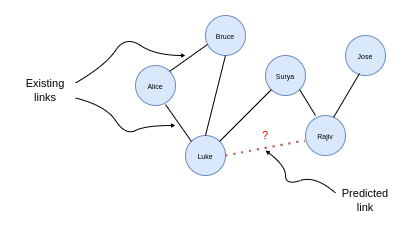This chapter covers
- Covering link prediction workflow
- Introducing link prediction dataset split
- Constructing link prediction features based on node pairs
- Training and evaluating a supervised link prediction classification model
Most real-world networks are dynamic and evolve through time. Take, for example, a friendship network of people. People’s friends change over time. They might meet new people or cease to associate with others. You might assume that new connections are forming randomly in a friendship network. However, it turns out that most real-world networks have a profound organizing principle. The studies around link prediction are focused on identifying and understanding various network-evolving mechanisms and applying them to predict future links.
